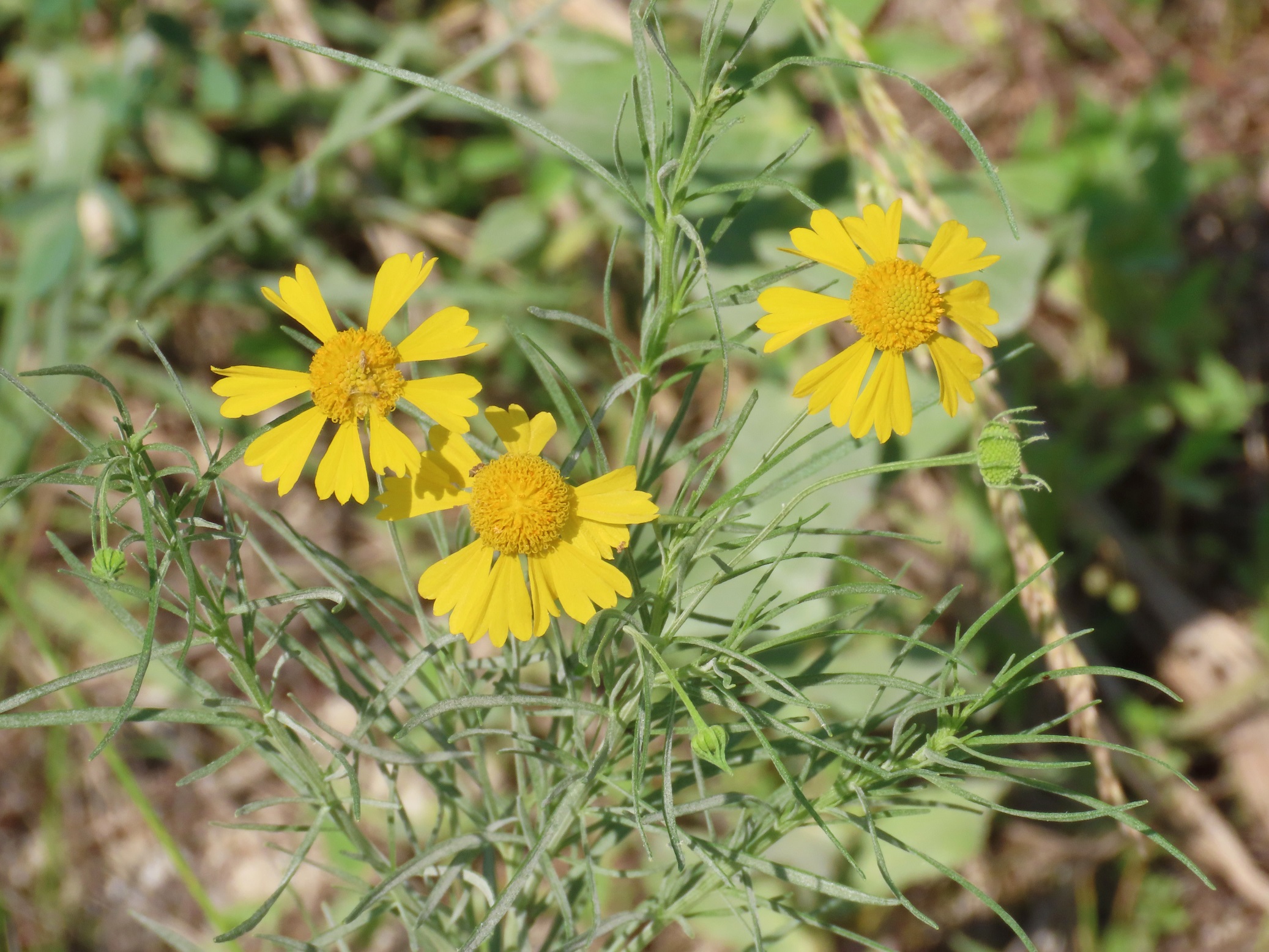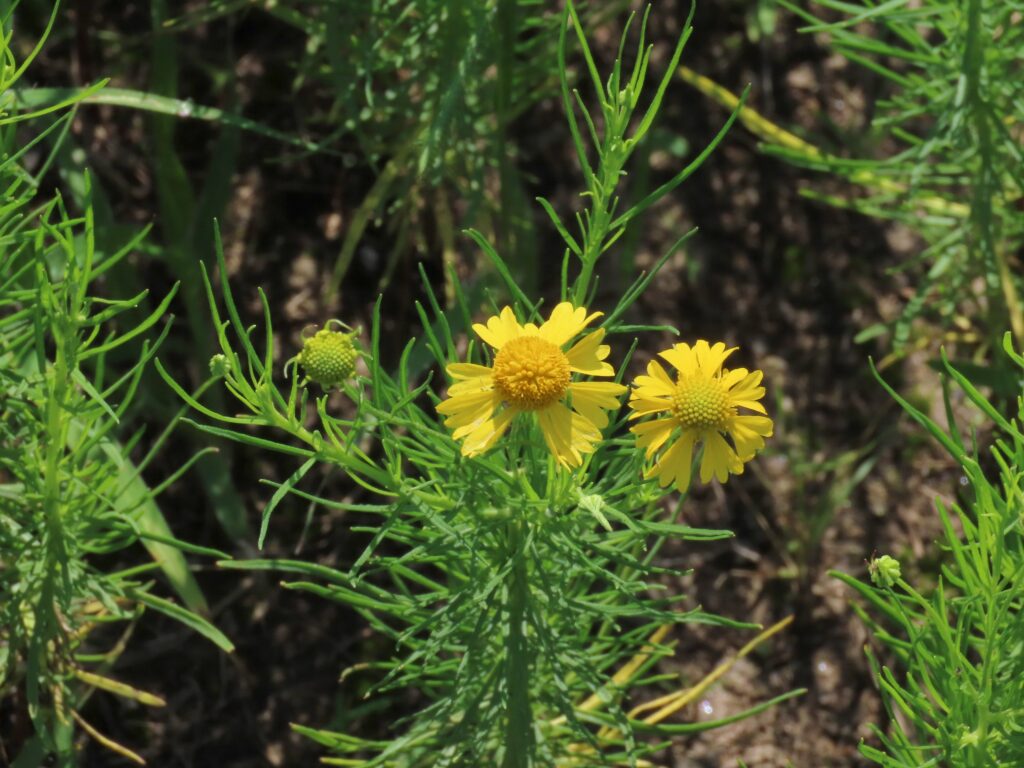


This week for Flora and Fauna Friday, we have a western wildflower with a love of wastelands, Bitter Sneezeweed (Helenium amarum).
Bitter Sneezeweed is a small wildflower, usually only reaching a foot or so in height with an upward, bouquet-like shape. Its leaves are thin, wiry, and numerous. They lend the plant a hazy, almost blurry look from a distance, where its leaves are too fine for the eye to individually resolve, like a mirage shimmering above a desert. Bitter Sneezeweed gets its common names from its foliage. Its leaves are chock full of bitter chemicals to discourage herbivores from chowing down. Yet, dairy cattle will eat it incidentally or when pickings are slim. Then those bitter compounds will transfer to that cow’s or goat’s milk, making it unpalatable for people. The generic Sneezeweed name comes from an old practice of drying and crushing the leaves of related Common Sneezeweed (H. autumnale) to make a powder that induced sneezing when inhaled. Above those leaves and atop this minute, multi-stemmed bush appears its handsome flowers, golden spheres served upon a dish of lemon-yellow rays. Bitter Sneezeweed begins to bloom about the summer solstice and carries forward through the end of summer. Its blooms are often the only flash of color, and one of a scant few sources of pollen and nectar, in many locales during the dog days of a Lowcountry summer.
Here in South Carolina, we have about a half dozen species of Sneezeweed, with Bitter Sneezeweed being the most widespread by far. However, Bitter Sneezeweed is a native to eastern Texas and its neighboring states but, thanks to us, has spread to new habitats throughout the South, to include all of South Carolina. Bitter Sneezeweed is adapted to the sedimentary soils of East Texas and is especially tolerant of the acidic, droughty, and calcium heavy soils found there. Across the South, it has settled into a second home on the disturbed and barren soils mankind leaves in the wake of our infrastructure. Bitter Sneezeweed is most often found along dirt roads, causeways, dirt pits, gravel parking lots, abandoned buildings, and others such sites on the fringes on man’s influence. These areas often have poor, compacted, weathered, droughty soils that are high in calcium from surrounding concrete, limestone, or oyster shells. Sprinkle on a little bit of shade from the midday sun, cast by a tree line or building, and this is the humble niche Bitter Sneezeweed has nestled into across the South.
Bitter Sneezeweed is a notable example of a plant where the line between native and non-native is blurred. It is native to the Southern United States, but certainly not to South Carolina. Here in the Lowcountry I could hardly call it an invasive species. (Although I’m sure there are some dairy farmers elsewhere in the Southeast who have a justifiably opposing perspective.) If anything, Bitter Sneezeweed in the SC Lowcountry is often a passive member of, or even a positive addition to, the barren, unnatural landscapes it inhabits, rather than an existential threat to their reclamation. It’s a secondary symptom manifest of a larger issue, rather than the source of poor health itself. I view Bitter Sneezeweed, and similar Gulf Coast advents, as honorary native plants here in South Carolina. These are beneficial plants that can augment and enhance our impaired landscapes by occupying the unfilled artificial niches we humans accidentally create. Thus they’re filling an open niche and simultaneously excluding exotic invasives species, who could have established there instead and threatened biodiversity in the surrounding landscape.